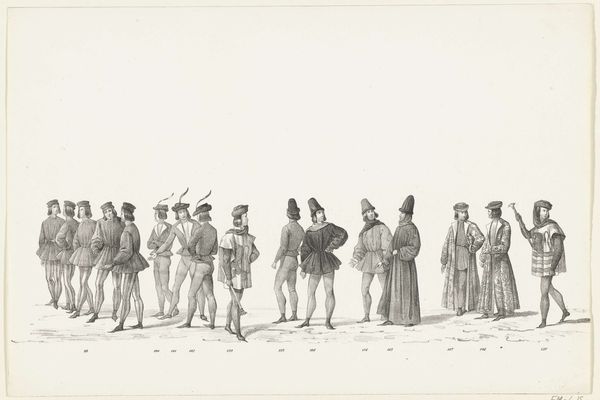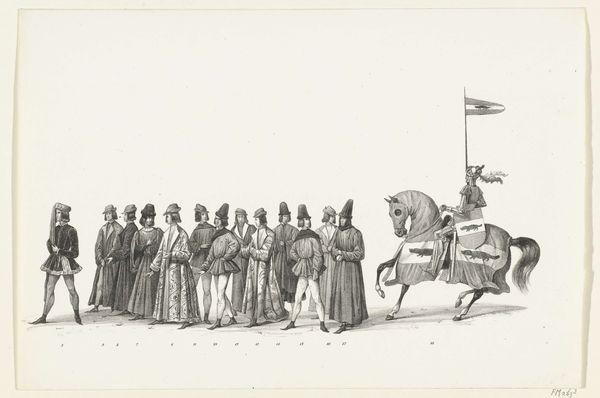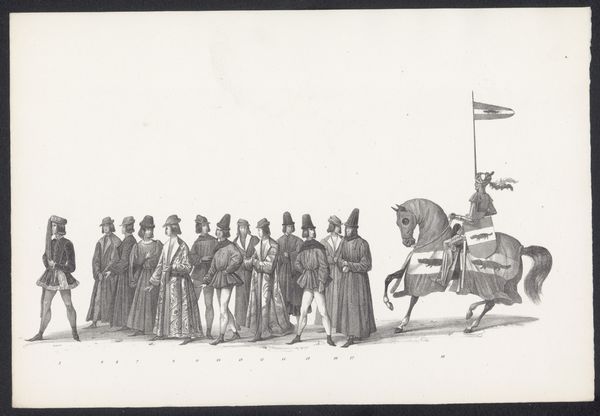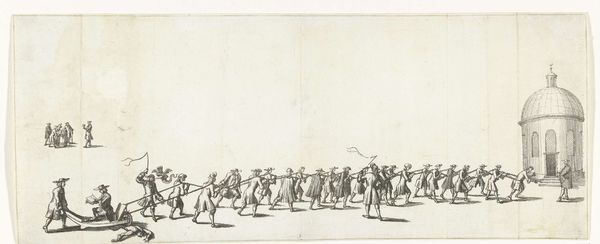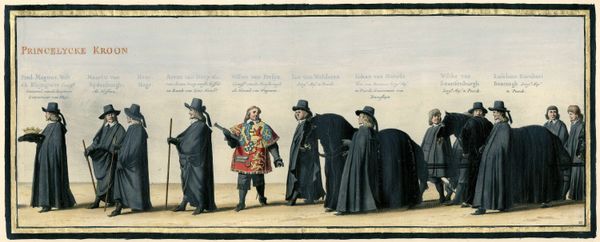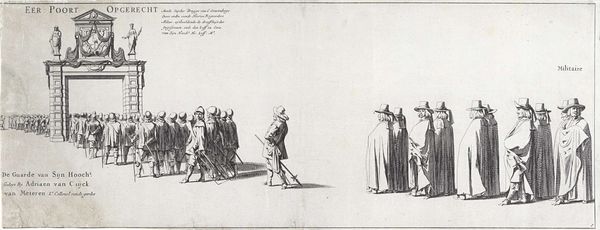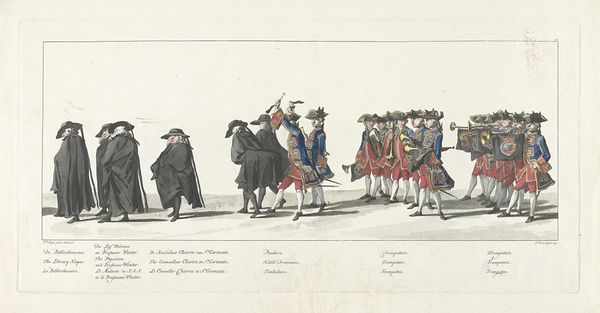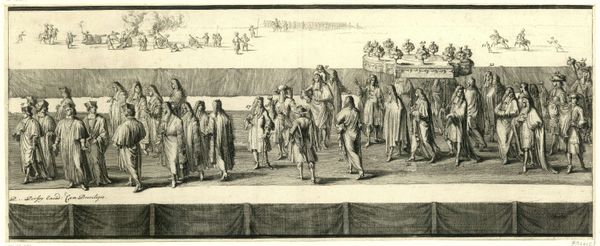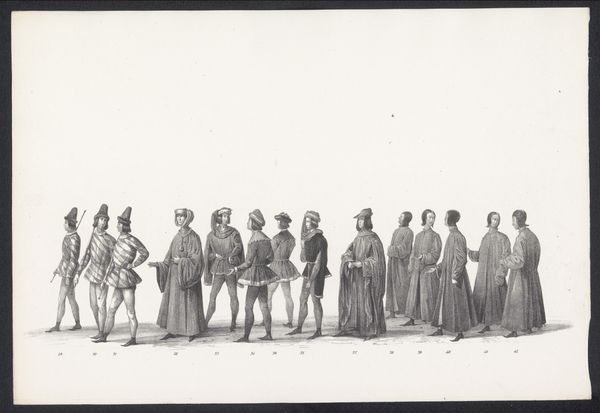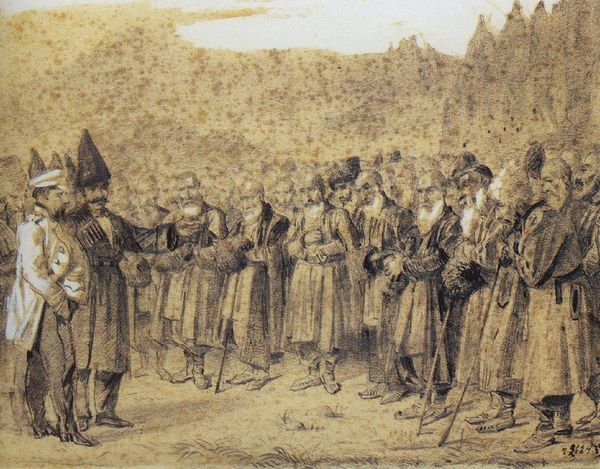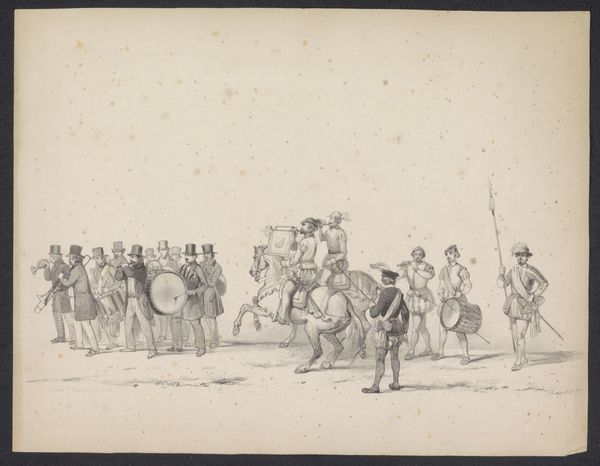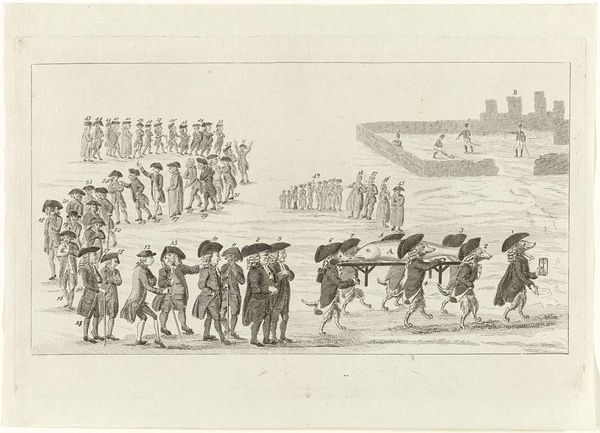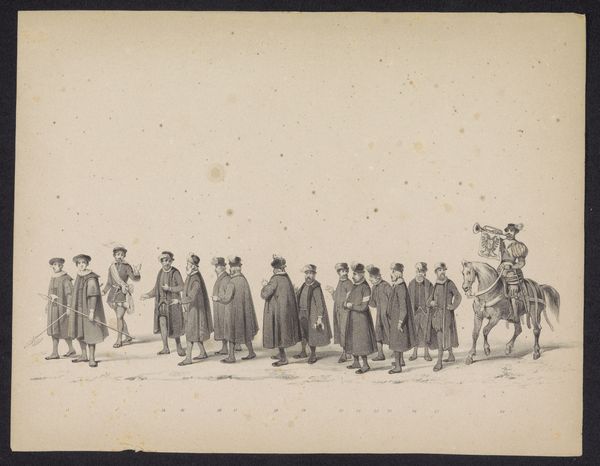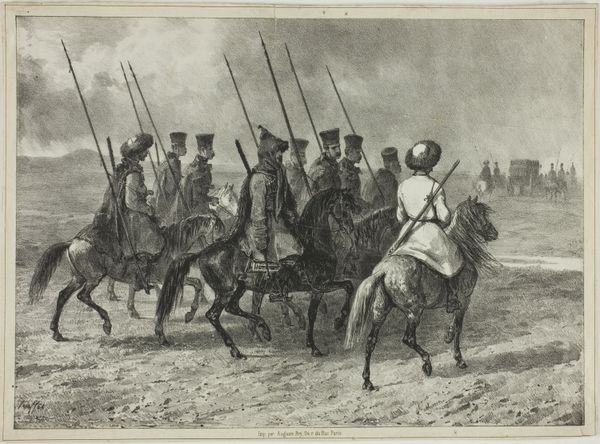
print, watercolor
#
water colours
#
narrative-art
#
baroque
# print
#
figuration
#
watercolor
#
coloured pencil
#
line
#
cityscape
#
watercolour illustration
#
history-painting
Dimensions: height 225 mm, width 565 mm
Copyright: Rijks Museum: Open Domain
Curator: Pieter Nolpe created this print, "The Funeral Procession of Frederick Henry, plate 1," in 1651. It resides here at the Rijksmuseum. It looks to be watercolor and pencil on paper. What is your initial reaction to it? Editor: My immediate reaction is one of solemn stillness. The colors are muted, and the composition, though showing movement, feels rather formal and quite…stiff. I mean, look at those ranks! Curator: It certainly conveys a sense of decorum. Frederick Henry was a significant figure in Dutch history; Stadtholder during a time of great political and economic expansion, so a grand state funeral was de rigueur. I see this artwork as a projection of power. It is literally projecting military strength and orderly governance. Editor: Indeed. It speaks volumes about the socio-political landscape of the time. Nolpe here meticulously documents the rituals surrounding power. The procession itself, moving towards the decorated gate, the carefully spaced figures... Do you notice how the light emphasizes the elite onlookers on the right? Curator: I hadn't considered that the onlookers were considered elite by their proximity, but that rings true. The use of light throughout the image guides the eye intentionally. Though a print, the delicacy of the watercolour gives a lightness to the heaviness of the event. You know, in its precision and staging, the work also reminds me of theatre. Editor: A performance of grief and power! It does also prompt me to think about the role these images played. How were they disseminated, and who was the intended audience? Curator: Good questions! Prints like this one were likely commissioned and widely distributed to solidify the image of a strong, stable Dutch Republic after Frederick Henry's death. Think of it as early PR. Editor: It definitely underscores the importance of visual representation in shaping public perception, especially around succession and political stability. All very effectively done, even if the effect leaves me feeling, as I said at first, strangely unmoved. Perhaps a consequence of its formality, but also maybe part of its purpose. Curator: An interesting counterpoint! And perhaps we each revealed something of ourselves, too. Me, finding beauty and strategy in a calculated piece, while you, seeking some…human warmth that a state event can rarely afford.
Comments
No comments
Be the first to comment and join the conversation on the ultimate creative platform.
